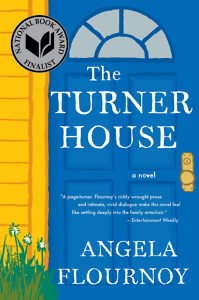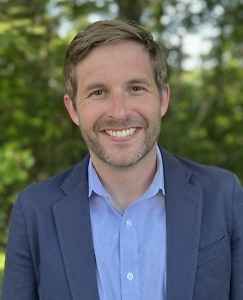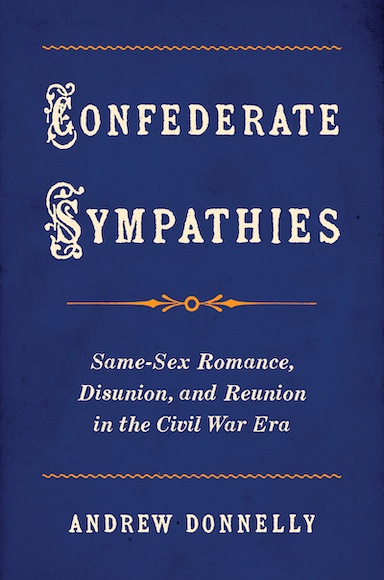The Two Souths
Frye Gaillard and Cynthia Tucker explain how Southern politics shaped the modern United States
“The South and the nation are not exchanging strengths as much as they are exchanging sins,” wrote John Egerton in his classic 1974 book The Americanization of Dixie: The Southernization of America. “More often than not, they are sharing and spreading the worst in each other, while the best languishes and withers.” As the South surrendered to mass consumerism and suburbia, he intimated, the United States adopted a Southern politics of racism and division.

In The Southernization of America: Democracy in the Balance, Frye Gaillard and Cynthia Tucker carry Egerton’s story to the present day, examining how the region’s politics and culture have shaped our nasty, polarized environment.
Gaillard is the author of more than 30 books on American culture and history. Tucker won the Pulitzer Prize for commentary as editorial page editor of The Atlanta Journal-Constitution. Both now teach at the University of South Alabama, where Gaillard serves as writer-in-residence, and where Tucker serves as journalist-in-residence. They answered questions via email from Chapter 16.
Chapter 16: You describe the narrative as “a story of political decline.” How so? How is this decline a story of the South?
Frye Gaillard: Well, it is partly a story of decline. The country is as deeply divided today as it has been for many years, and the threat to American democracy, which we believe is real, is an echo, in many ways, of the white South’s attack on democracy in the wake of Reconstruction. Through a combination of terrorism by the Ku Klux Klan and the racial cynicism of the Democratic Party, the full benefits of citizenship were snatched away from African Americans in the 19th century, especially in the South. In our part of the world, whiteness — white supremacy — was more important than democracy in the minds of many white citizens. Our biggest fear is that this insidious belief never disappeared and has begun to metastasize to many parts of the country.
Cynthia Tucker: By the 1990s, I thought the nation was moving, finally, toward living up to the glorious promise of its founding documents. Despite his personal flaws, Bill Clinton seemed committed to racial equality — partly because his small-town Arkansas upbringing had helped him see the full humanity of his Black neighbors. Clinton narrowly won Georgia, by the way, in his first presidential bid. Other white Southern politicians, such as then-Gov. Zell Miller of Georgia, were trying to lead their white constituents to come to terms with the sins of the past, as Miller did by trying to remove the Confederate battle insignia from the state flag. But those nobler impulses were met, quickly, by an opposing tide. That became clear in the vicious fights over undocumented immigrants that became a feature of national and state politics — especially in the South — by the turn of the new century.
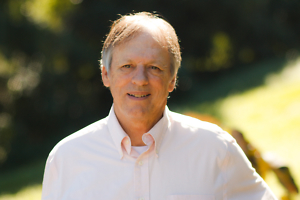
Gaillard: But we also argue in this book that if the South has been the epicenter of American racism, with all of its cruel, anti-democratic implications, there is another South — the civil rights South — which has been an epicenter of American idealism. This is the South of Dr. Martin Luther King Jr., of John Lewis and Jimmy Carter and Stacey Abrams – these champions of democracy and human rights who represent the best in us. This South is still alive, still working to export its promise to the rest of the country, to ally itself with that promise wherever it can be found.
Chapter 16: In 2008, Barack Obama’s election to the presidency seemed to promise a new era of racial progress. What happened?
Tucker: Having grown up as the civil rights movement was reaching its zenith, I believed in the adage that Dr. King popularized: The arc of the universe bends long, but it bends toward justice. I genuinely believed that the people of the United States would continue to move, haltingly perhaps, toward a more perfect union. Obama’s election seemed to epitomize that. I never believed his election suggested a post-racial America — I knew racism was alive and well — but I didn’t anticipate the ugly backlash to the first Black president. The Tea Party appeared on the scene with its thinly veiled racism; many whites then complained that Obama’s election made racism worse. Well, Obama didn’t do that. Instead, the mere fact of his presidency angered a substantial minority of whites. Here is a quote from the late Rush Limbaugh shortly after Obama was re-elected: “I went to bed last night thinking we’re outnumbered… thinking we’ve lost the country. I don’t know how else you look at this.” That, unfortunately, summed up the thinking of a lot of white Americans.
Gaillard: Isabel Wilkerson, in her provocative best-seller, Caste, argues that we have always had a racial caste system in this country – often unspoken, but a powerful presence nevertheless. Obama’s election, she maintains, represented such a threat to that caste system – to the need that many people feel (white people, in this case) to be better than somebody else – that it evoked a powerful backlash. We think she’s right. The willingness to demonize Obama, often in really stupid ways, went far beyond any disagreements people might have with his policies. Many of us were stunned. We just didn’t see it coming.
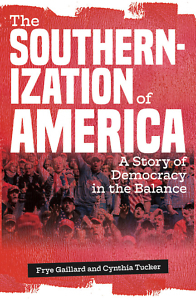 Chapter 16: You draw parallels between Donald Trump and a figure from Southern political history, George Wallace. How did Trump borrow from Wallace’s playbook?
Chapter 16: You draw parallels between Donald Trump and a figure from Southern political history, George Wallace. How did Trump borrow from Wallace’s playbook?
Gaillard: Wallace was an enormously consequential figure, a talented politician who used that talent, for much of his time on the public stage, to appeal to the very worst that’s in us. In some ways, he taught the nation to think in code. He talked about states’ rights when he meant segregation, and he stirred racial animosity and hatred in a way that was surprisingly successful. But we knew in the 1960s that George Wallace was not going to be president. Then came Trump.
Tucker: I have read and re-read Dan Carter’s The Politics of Rage. It’s a brilliant analysis of Wallace and his politics, but I thought I was reading a history — not an analysis of our current political moment. Then, I read it again after Trump’s election and noticed the subtitle: The Origins of the New Conservatism and The Transformation of American Politics. That says it all, doesn’t it? I doubt if Trump ever read the book, but he nevertheless managed to adapt Wallace’s rhetoric, style, and appeal. Trump understood, as Wallace did, that there is a deep well of white resentment and grievance to which a cunning and uninhibited demagogue can appeal.
Chapter 16: The memory of Southern history has taken on an outsized role in modern American politics, as seen in controversies over Confederate monuments. How has the “Lost Cause” shaped modern politics in the South and beyond?
Gaillard: Doug Jones, a Democrat who served with distinction in the U.S. Senate in the immediate aftermath of Trump’s election, pointed out that the Confederacy consisted of 11 states, but there are Confederate monuments in more than 30. If you’re putting up those monuments in Montana, or wherever, you’re probably talking about something other than heritage. And of course that’s true of all those monuments. A monument to sadness and suffering and loss is one thing. Monuments to white supremacy are another.
Tucker: That’s so true. Donald Trump became a vigorous defender of Lost Cause iconography, although he grew up in Queens and never lived in the South. Across the globe, white supremacists have adopted the Confederate battle insignia as a symbol of their cause. Even if many defenders of the Confederacy insist the Civil War was about saving the South from pillaging Yankees, modern-day white supremacists know better.
Chapter 16: What do we learn about national trends by studying southern evangelical Christians such as Jerry Falwell? What is the imprint of conservative Christianity on American politics?
Tucker: Conservative Christians, including Mitch McConnell and Mike Pence, now serve or have recently served in some of the highest political offices in the land. And their version of Christianity is not the generous and inclusive version that Jimmy Carter practices. Theirs is an exclusive and narrow-minded Christianity that revels in the culture wars. That’s why we see not only broad limitations on abortion, but also a backlash against transgender athletes and against the LGBT community. Many of the politicians who push those policies loudly label themselves “Christian.”
Gaillard: Also, Falwell first dipped his toe into political waters as a segregationist, a harsh critic of Dr. Martin Luther King. But in addition to the content of white evangelical Christianity, there is also the pattern of thought that seeps from religion into politics — that fundamentalist tendency to say, “I am totally right, and if you disagree you are totally wrong and we have nothing to learn from each other.” We quote one white minister as saying, “Compromise is the lifeblood of politics and the death knell of theology.” When the two become one, that’s a toxic mix.
Chapter 16: In the book’s final pages, you recall how Congressman John Lewis once said that he found more hope in the South than anywhere else in America. Why? What does the South look like, at its best?
Gaillard: First of all, John Lewis was one of the most irrepressibly hopeful political figures — moral leaders — that this country has ever seen. Those of us who were privileged to know him even a little often marveled at this, at how he could be beaten almost to death on the Edmund Pettus Bridge and never lose faith in the power of love and nonviolence to transform the heart of the country. And he did see a lot of transformation. He was born and raised in rural Alabama, where he couldn’t check out a library book because of the color of his skin. He was beaten and jailed when he joined the Freedom Rides or marched for civil rights.
But by the end of his life, he was arguably the most revered member of the U.S. Congress. Former Presidents Barack Obama and George W. Bush both spoke at his funeral. President Bush pointed out that during his term, he proudly signed an extension of the Voting Rights Act. That’s what the South at its best looks like: a conservative Republican president from Texas affirming that voting rights must be a bipartisan issue; a white peanut farmer from Georgia accepting the Democratic nomination for president, standing side by side with Martin Luther King Sr. in what felt a lot like a revival, as Daddy King proclaimed, “Surely the Lord is in this place”; or the Rev. Raphael Warnock, pastor of the Atlanta church once led by Martin Luther King Jr., elected to the Senate seat once held by the arch segregationist Herman Talmadge. “That’s why I love America,” Sen. Warnock said in his maiden Senate speech.
Tucker: Let me tell you a story. One night I was working late at The Atlanta Journal-Constitution. When I left my office around 10 pm, there was only one other vehicle in the company garage: a pickup truck covered in Confederate decals with the stereotypical gunrack and shotgun in the back window. It belonged to a maintenance contractor who wasn’t in the vehicle. Still, I was little unnerved — more so when my car wouldn’t crank. Suddenly, the man appeared at my window offering to help me. Addressing me as “ma’am,” he got my battery started and insisted on following me home to see that I got there safely. That is one version of a better South.
Gaillard: We believe both Souths are alive and well. We end the book by saying we don’t really know which is the stronger, which is having the greater impact on the country. The answer may become clear soon. The stakes could not be higher.

Aram Goudsouzian is the Bizot Family Professor of History at the University of Memphis. His most recent book is The Men and the Moment: The Election of 1968 and the Rise of Partisan Politics in America.



